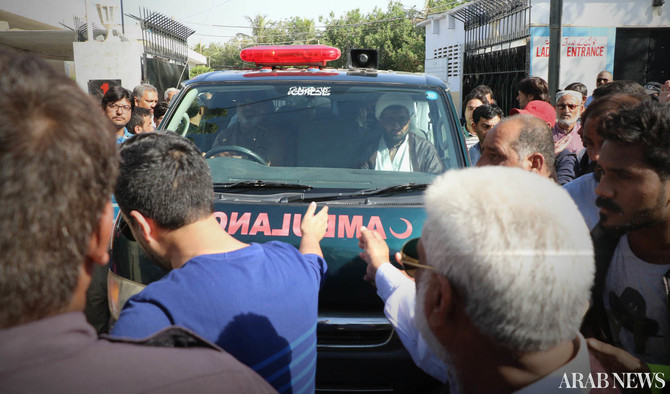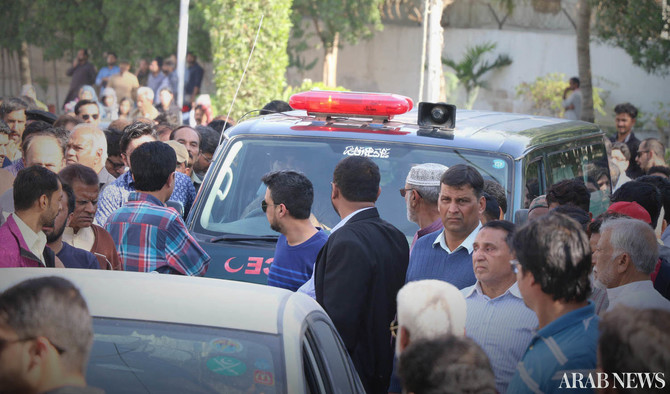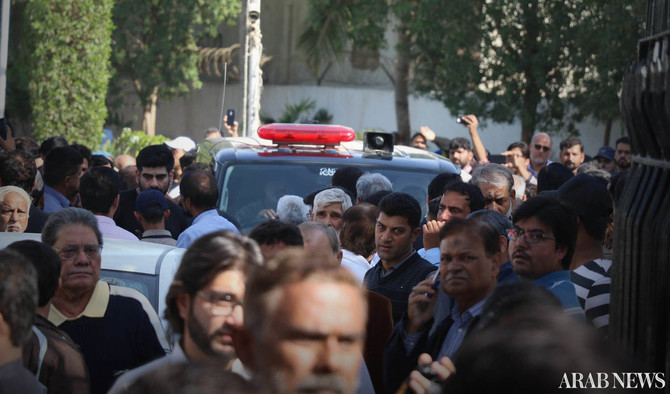KARACHI: The murder of Ali Raza Abidi is most likely the result of infighting within the various factions of the Muttahida Qaumi Movement (MQM), a senior counter-terrorism official said on Wednesday.
Fearing a return of violence to Karachi, where peace has been restored after years of bloodshed from 2009 till 2014, senior counter terrorism officer, Raja Umar Khattab said that 2013 — when targeted operations began to rid the city of violence — was the deadliest year with 3,251 killings.

Abidi was shot multiple times outside his residence in the Khayaban-e-Ghazi neighborhood of DHA on Tuesday night by unidentified assailants. (Screengrab from a video provided by Sindh Police)
Abidi was shot multiple times outside his residence in the Khayaban-e-Ghazi neighborhood of DHA on Tuesday night by unidentified assailants. His funeral prayers were offered on Wednesday afternoon. Allama Hassan Zafar Naqvi led the prayers at the Imambargah Yasrab, which was attended by senior leaders of the MQM-Pakistan, relatives, friends, and political and social figures of the city.
“The murder of Abidi is most likely the outcome of internal differences,” Khattab said, adding that the “incidents which occurred over the last couple of days is indication of the more violence. Law enforcement agencies are, however, ready to curb violence.”
“Two trained killers carried out the shooting within 10 seconds and escaped,” Khattab said.
Citing details of the forensic report, the official said that the weapon used to murder Abidi matched the pistol used in the killing of Ehtisham , who was killed by Irfan . Irfan is believed to be associated with the MQM.
Senior Superintendent of Police (SSP) South Karachi, Pir Muhammad Shah said that the investigation is being conducted from three angles. “We are investigating the murder from three angles; personal enmity, political, and sectarian,” Shah told Arab News.
“We have the technology, which will help us identify the killers. The footage we have got will definitely take us to the killers,” Shah said.
The official said that Abidi’s guard, identified as Qadeer, has been taken into custody as he fled instead of retaliating. SP Investigation Tariq Dharejo told Arab News that the statements of seven persons, including the guards, have been recorded.
A high-level security meeting at the CM House also cited political reasons as the motive for the murder.
“They [The intelligence agencies[ also pointed out making and breaking in some parties was also leading to violence,” a statement issued by the CM House said, adding that “police and Rangers have made some important arrests and they are sure that some solid clues would be unearthed to arrest the killers.”
It was also highlighted at the meeting that due to hate speeches being broadcasted from London, certain party workers were being instigated to murder their opponents.
“At this the chief minister directed Chief Secretary Mumtaz Shah to talk to the Foreign office in Islamabad to raise the issue with the British embassy,” the statement added.



















